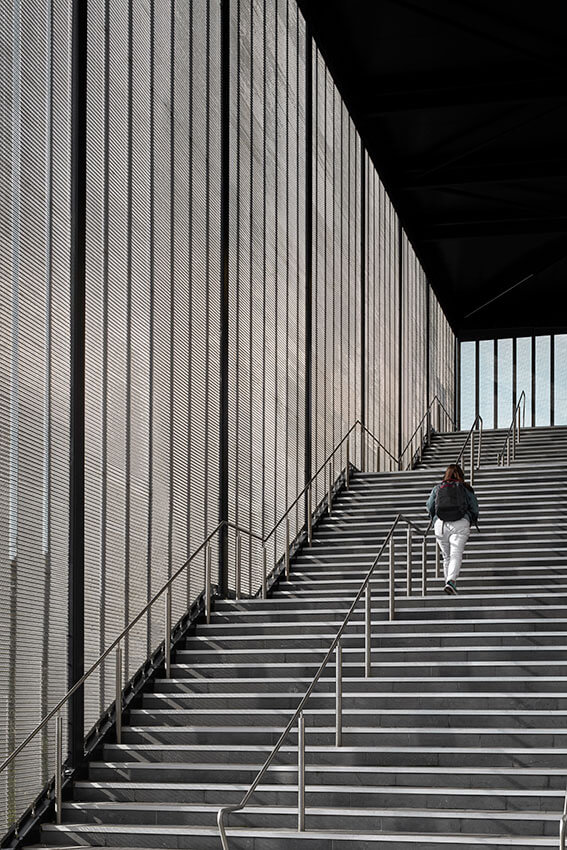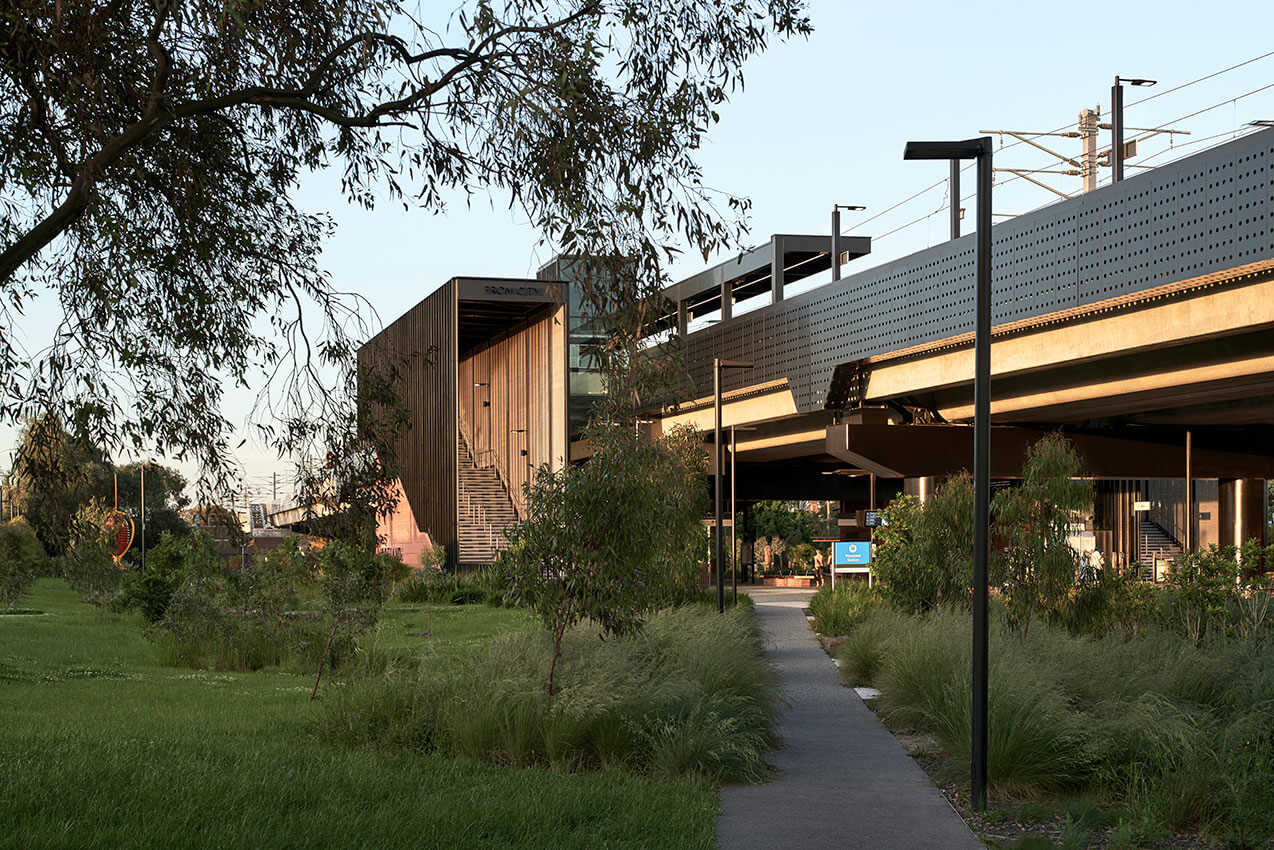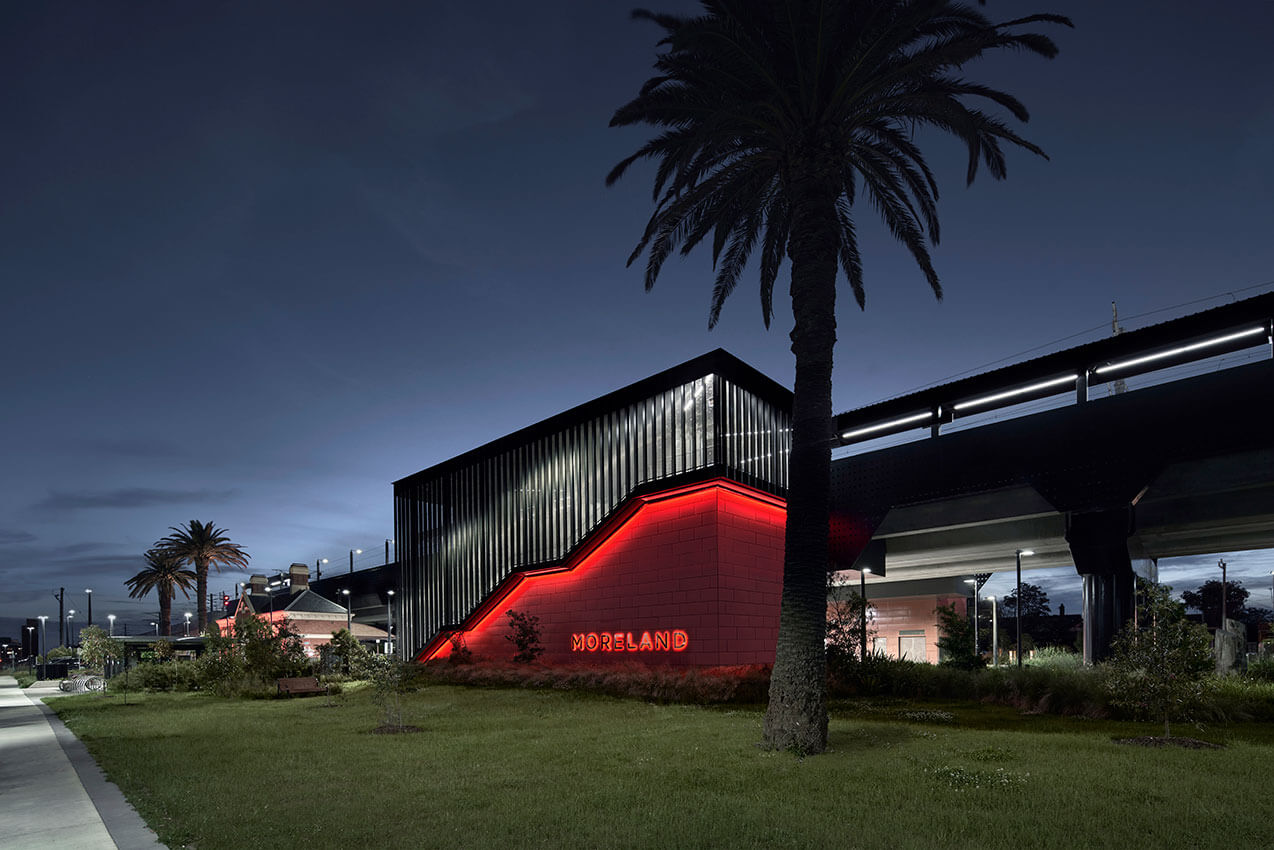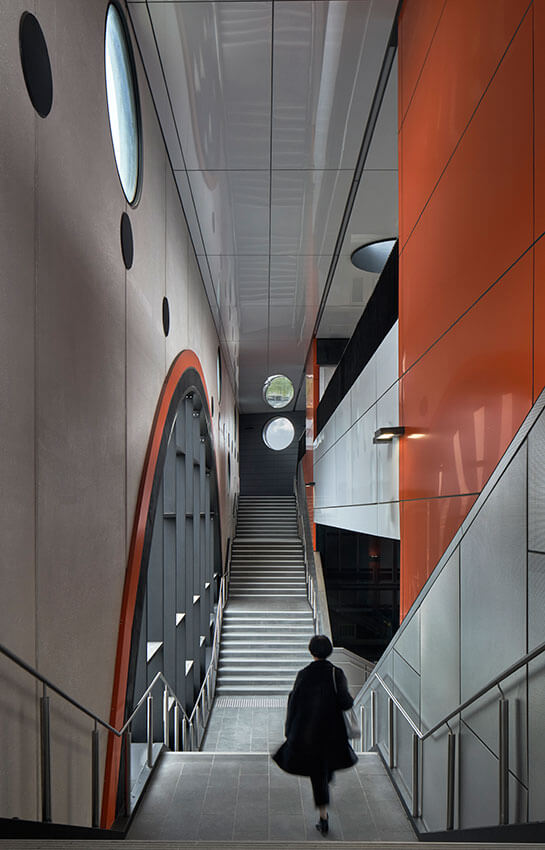Bell to Moreland Level Crossing Removal Project | Wood Marsh Architecture
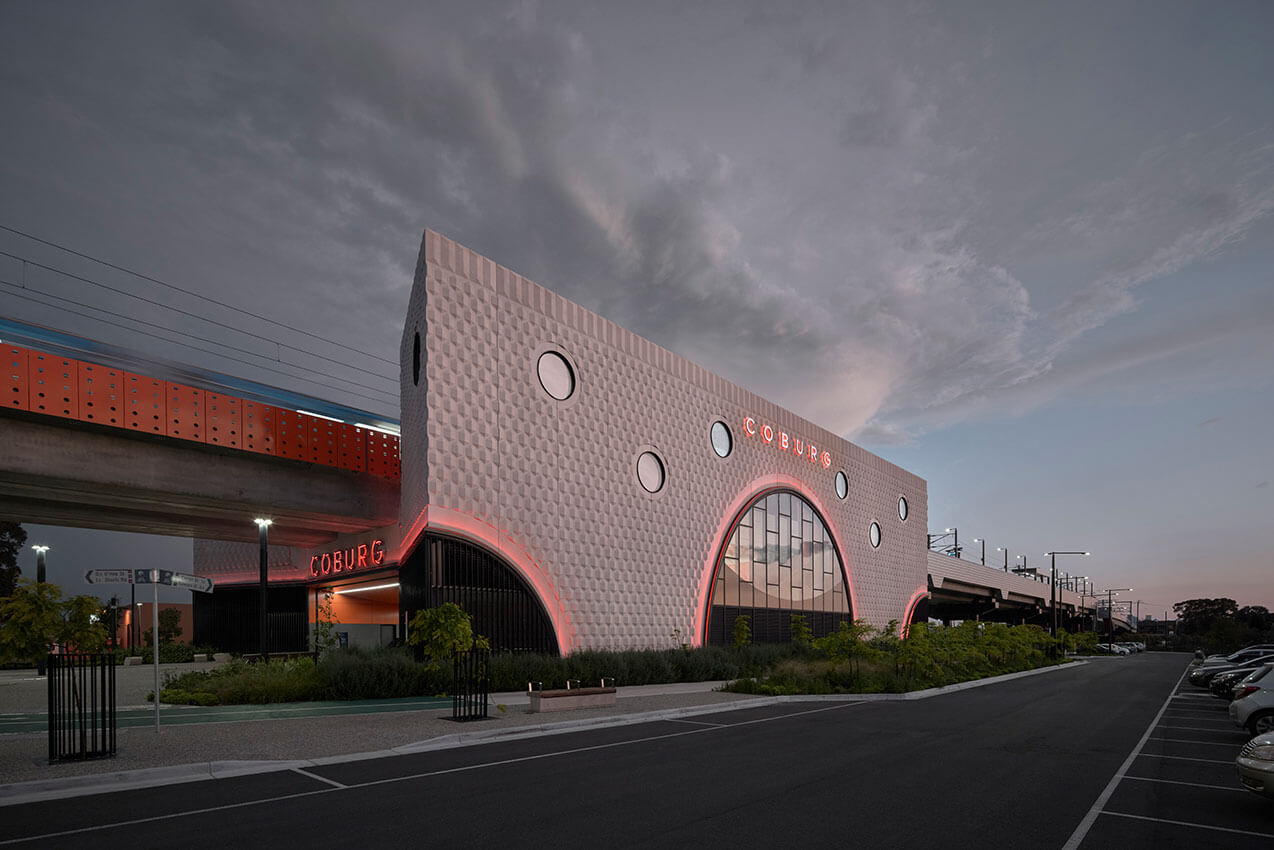
2023 National Architecture Awards Program
Bell to Moreland Level Crossing Removal Project | Wood Marsh Architecture
Traditional Land Owners
Wurundjeri
Year
Chapter
Victorian
Category
The Dimity Reed Melbourne Prize (VIC)
Urban Design
Builder
Photographer
Media summary
Coburg and Moreland Stations form part of the Bell to Moreland Level Crossing Removal Project as spaces for the community. The civic architectural response celebrates the history of railways whilst improving infrastructure and amenities to better serve the local neighbourhood.
Coburg Station references the formal language of classical architecture with friezes, architrave details, and a hexagonal relief that animates the exterior. Its grand arched windows and spacious concourse impart a civic architectural tone. At Moreland Station a grand staircase on either side of the tracks seamlessly floats above a terracotta-panelled base. An orange colour scheme is employed at both stations as a playful form of identity and placemaking.
The elevated skyrail allows the introduction of added public spaces, recreation facilities, and parkland. These stations serve as unique, dynamic hubs that link the local community to greater Melbourne by providing safe and equitable access.
2023
Victorian Architecture Awards Accolades
Commendation for Urban Design
Shortlist – Public Architecture
Shortlist – Urban Design
Victorian Jury Citation
Commendation for Public Architecture
This project not only provides lasting amenity at the new civic-scaled Moreland Station and the contextually rich and engaging Coburg Station, but also resolves a clear and cohesive design language at each station which bookend two kilometres of linear park including generous public amenity, increased greening, recreation, walking and cycling paths by Tract.
Commendation for Urban Design
The Bell to Moreland Level Crossing Removal Project is an exemplary example of urban design, delivering significant enhancements for the local community and the everyday experience of the commuter.
The elevation of the railway which once bisected Coburg and the vertical arrangement of the station buildings has opened up large swathes of public space which provides improved connections across the suburb. The bold civic forms of the Coburg and Moreland stations, with their grand staircases, arched windows and refined detailing have provided iconic structures that have instilled civic pride and identity.
Project Practice Team
Andrew Pope, Graduate of Architecture
Armin Voelske, Graduate of Architecture
Emma Seaton, Graduate of Architecture
Guat Sin Toh, Graduate of Architecture
Jesse Gould, Project Architect
Kim Yew Lee, Design Architect
Mary Spyropoulos, Graduate of Architecture
Matilda Parolini, Graduate of Architecture
Roger Wood, Design Architect
Sida Feng, Graduate of Architecture
Woody Shmith, Graduate of Architecture
Project Consultant and Construction Team
KBR, ESD Consultant
KBR, Services Consultant
KBR, Structural Engineer
Philip Chun, Building Surveyor
Safya, DDA Consultant
SLR, Acoustic Consultant
Connect with Wood Marsh Architecture


